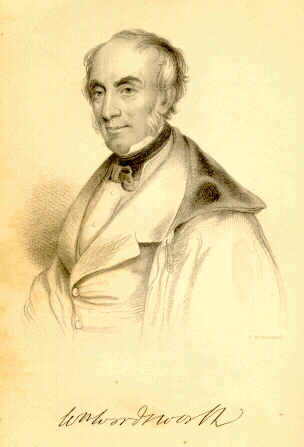Bad Dreams
Today, engineers face things that go bump in the night. The University of Houston's College of Engineering presents this series about the machines that make our civilization run, and the people whose ingenuity created them.
William Wordsworth writes about a creative person's dreams in language that any engineer will recognize. He says,
Huge and mighty forms that do not live
Like living men, moved slowly through the mind
By day, and were a trouble to my dreams.
Our ideas do haunt us that way while we give birth to them.
So much rides on the engines that march out of our ingenuity. If our concept fails, we suffer humiliation. If the bridge fails, children die. We can create ugliness instead of beauty.
Herbert Hoover was an engineering giant before he became president. He picked up on Wordsworth's theme. Listen as he writes about the troubles that beset an engineer's dreams:
If his works [fail] he is damned. That is the phantasmagoria that haunts his night and dogs his days. . . . He wakes in the night in a cold sweat and puts something on paper that looks silly in the morning. All day he shivers at the thought of the bugs [that] inevitably appear to jolt its smooth consummation.
I know that theme well. I do a lot with high pressure water and steam. I've designed many one-of-a-kind experiments.
Several years ago, I pressurized water to 2600 psi and heated it over 600 degrees. Then I broke the pipe open in a 10,000th of a second to simulate a nuclear accident. Eventually the experiment worked. When it did, the controlled, soul-satisfying explosion jolted people in the next building.
But I know what it is to wake at 4:00 AM imagining that I've crippled a student by some oversight in my design. I know what is to waken, thinking about the ancient Code of Hammurabi. It said that if a building fell and killed the owner's son, then the architect's son must also die.
This series often celebrates the creative flash without saying enough about the other side of that coin. Sure, the creative act does occur in a flash. But more often than not, that flash is the consummation of weeks of nose-to-the-grindstone agony -- even despair.
Charles Ellis transformed the first ugly design of the Golden Gate Bridge into the Bridge we know today. We read about how he did it:
. . . he plunged back into his calculations for the bridge towers, devoting weeks, then months, to the sweet, absorbing agony of revision.
That sweet absorbing agony is just where the creative leap so often takes flight. It certainly did in this case. I look at those awful first drawings of the Golden Gate Bridge. Then I compare them with the glory that stands today. It really had to take pain, love, and many, many troubled dreams to turn lead into such bright burnished gold as that.
I'm John Lienhard, at the University of Houston, where we're interested in the way inventive minds work.
(Theme music)
Petroski, H., Good Drawings and Bad Dreams. American Scientist, March-April 1991, pp. 104-107.
Petroski refers to van der Zee's account of Ellis's work revising Joseph Strauss's original Golden Gate Bridge design. My super-rapid depressurization experiment is described in
J.H. Lienhard and G.S. Borkar, Quick Opening Pressure Release Device and Method. U.S. Patent no. 4,154,361. May 15, 1979.
J.H. Lienhard, Md. Alamgir, and M. Trela, Early Response of Hot Water to Sudden Release from High Pressure. J. Heat Transfer, Vol. 100, No. 3, 1978, pp. 473-9.
Md. Alamgir, C.Y. Kan, and J.H. Lienhard, An Experimental Study of the Rapid Depressurization of Hot Water. J. Heat Transfer, Vol. 102, No. 2, 1979, pp. 433-8.
Md. Alamgir, C.Y. Kan, and J.H. Lienhard, Early Response of Pressurized Hot Water in a Pipe, to a Sudden Break. EPRI Report. NP-1867, Project 687-1, June 1981.

From Poems of Imagination and Fancy, 1891
William Wordsworth

Patent drawing for rapid depressurization device